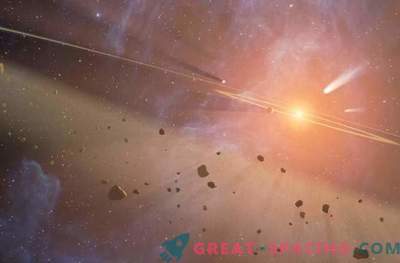
Scientists for the first time managed to penetrate the heart of the planetary system. Moreover, they recorded the temperature and amount of gas.
Planets are formed from expanding gas and dust disks. More precisely, they are in the middle itself, but because of the huge amount of dust, researchers have not been able to see what is happening inside. Only disk and surface observations were available. Even when determining the density, gravitational velocity and temperature, we had to exclude from the calculations the place where the planets themselves are born.
However, Edwin Bergin's new method allows you to look deep. This is a disc located 180 light years away. To capture the conditions in which the planet is formed, scientists could use molecular hydrogen. But the problem is that it does not stand out at the stage of the birth of the planet, because there is a low temperature there. Therefore, they took a new indicator - proxy molecular hydrogen (a rare form of carbon monoxide).
It turned out that millimeter light is emitted naturally from this rare form, which clearly tracks the place of planetary formation. In this study, used the services of the Atakam large millimeter-range grill. The conclusions were made on the basis of the distribution of carbon mono-oxide (temperature was measured by the way the molecule glows brightly). If we want to understand the processes and the formation of our system, we must be able to look into these hidden areas. But that's not all. For the first time, it was possible to directly measure the “carbon monoxide snow line” - the radius at which the element freezes. Behind this feature, the heat of the star is enough to turn it into steam. But in the middle plane is transformed into ice. Researchers believe carbon monoxide can play the same role as water in our system.
During condensation, water adds a lot of mass to the planetary core. It makes solids sticky and helps them coalesce. Scientists think that “ice” carbon monoxide can perform a similar function. They hope that the study of the snow line of this disk will help to understand its role in the process of forming planets.











































